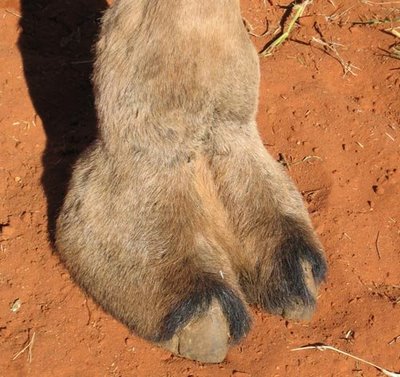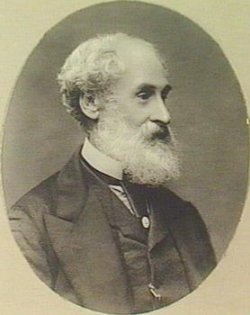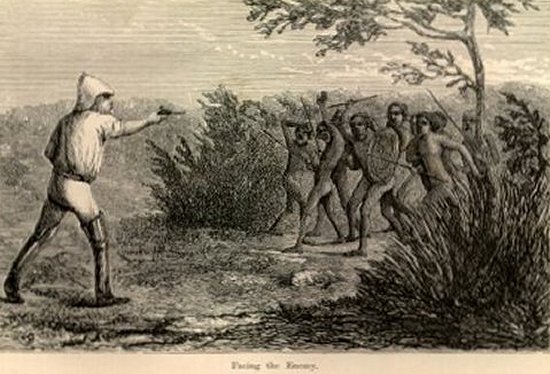
Peter Egerton Warburton was perhaps one of the least successful Australian explorers of the 19th century. In April 1873 he set off from Alice Springs to find a route to the west coast on what was to be his last attempt at exploration.

Over the weekend I was going through some papers and found the following in a modest booklet titled “Peter Egerton Warburton. Who Wanted To Go To Perth” by Margaret Simpson (1975. Holt, Reinhart & Winston). Warburton was successful in reaching the west coast but at considerable cost and threat to life and limb – and not just those on the expedition:
Warburton tried hard to capture local people to lead him to water. Three times he captured women or children but he got little help, if that is what he expected for ‘…they avoid us as though we are plague stricken.‘

She summed up the expedition thus, noting that Warburton:
…was the first European to emerge on the Indian Ocean coast from the Overland Telegraph Line in the Centre. He was welcomed in Western Australia as a hero and in South Australia with a great banquet and a thousand pounds. The Royal Geographical Society awarded him its gold medal for 1874 and the Queen made him a Companion of the Order of St. Michael and St. George.
He discovered no exploitable land. His only water was from native wells. He knew that the local people had the secret of the water but he did not know how to get them to share their knowledge with him except by force. The people through whose lands he passed had cause to remember him with anger and bewilderment. He lost his notebooks and instruments and explorers who followed him found his maps useless…
Perhaps his recipe for the preparation and cooking of camel well make a fitting memorial:
Warburton and his party became stranded at the Oakover River and were reduced to eating their camels one by one. This is Warburton’s Recipe for the Preparation of Camel (adapted from his Journey across the western interior of Australia, p. 217):
It may be as well here to insert the method by which camel meat was cured and the animal generally disposed of, for many more of these were doomed to fall under the knife and the treatment in every case was precisely similar.
The main portions of the beast were first eaten, not the liver and the other dainty parts only, but ALL, every single scrap, was greedily devoured and wherever eating is mentioned it must be taken as ‘pied de lettres‘ not with the loose significance we attach to it in England: to eat a bird meant, with the explorer, to pluck him and then eat him right through. And to eat a camel meant exactly the same thing. No shred was passed over-head, feet, hide, tail – all went into the boiling pot – even the very bones were stewed down for soup first and then broken for the sake of the marrow they contained. The flesh was cut into thin flat strips and hung upon the bushes to dry in the sun – three days being requisite to effect the process properly.
The tough, thick hide was cut up and parboiled. The coarse hair was then scraped off with a knife and the leather-like substance replaced in the pot and stewed until it became like the inside of a carpenter’s glue pot, both to the taste and to the smell. The head was soon reduced to a polished skull, tongue, brains and cheeks all having disappeared.
To prepare the foot:
Cut off the foot at the hock and scrape and singe as much hair off as time and appetite will allow. Stick the end into glowing coals. Burn it for some considerable time. Then, strike it smartly with a tomahawk when, if charred, the sole will come off. Place the foot in a bucket and keep it steadily boiling for 36 hours. Then your teeth, if good, will enable you to masticate your long deferred dinner.







Crikey is committed to hosting lively discussions. Help us keep the conversation useful, interesting and welcoming. We aim to publish comments quickly in the interest of promoting robust conversation, but we’re a small team and we deploy filters to protect against legal risk. Occasionally your comment may be held up while we review, but we’re working as fast as we can to keep the conversation rolling.
The Crikey comment section is members-only content. Please subscribe to leave a comment.
The Crikey comment section is members-only content. Please login to leave a comment.